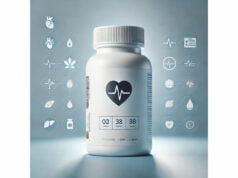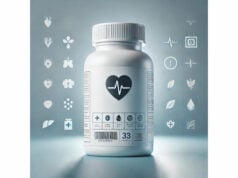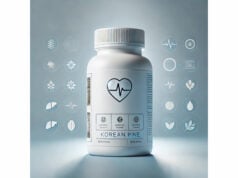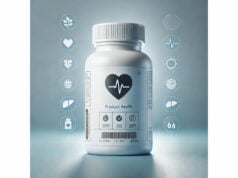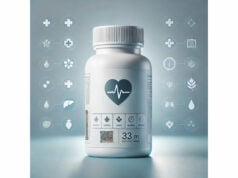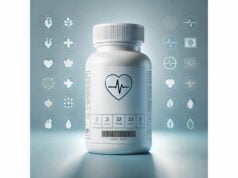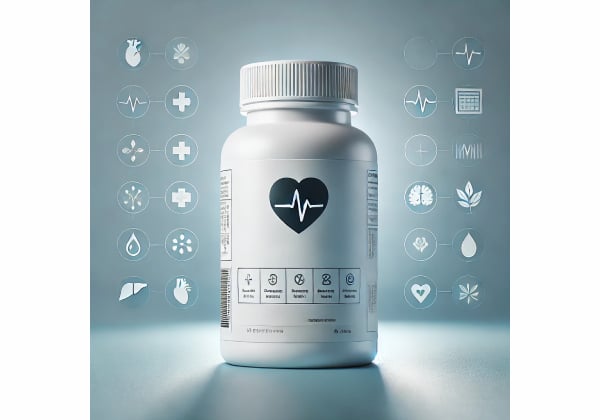
Krill protein is extracted from Antarctic krill (Euphausia superba), a small crustacean harvested in cold waters. Unlike standard fish or dairy proteins, krill protein comes with a naturally high content of essential amino acids and small peptides formed during gentle processing or hydrolysis. These features can make it easy to digest and fast to absorb, with potential benefits for muscle recovery, metabolic health, and general nutrition when used as a stand-alone powder or blended into ready-to-drink formulas. Because krill are low on the marine food chain, their tissues tend to carry fewer accumulated contaminants than large fish. Modern krill protein ingredients are also typically low in fat, odor, and pigment—making them more neutral in taste and versatile in recipes than early krill meals. This guide explains what krill protein is, how it works in the body, the best ways to use it, typical dosage ranges, who should avoid it, and how to navigate safety and labeling so you can decide whether it fits your goals.
Quick Overview
- Supports protein needs with a complete essential amino acid profile; hydrolysates deliver fast absorption of amino acids.
- Emerging evidence suggests bioactive peptides from krill may have antioxidant and antihypertensive potential.
- Typical daily use: 3–15 g/day of krill protein or hydrolysate; athletic or high-protein plans may use up to 20–30 g/day divided.
- Avoid if you have a known crustacean shellfish allergy or are advised to limit marine products due to medical reasons.
Table of Contents
- What is krill protein and how is it made?
- Does krill protein work? Key benefits explained
- How to use krill protein and find your dosage
- Krill protein vs whey, casein, and plant proteins
- Common mistakes and how to fix them
- Safety, side effects, and who should avoid it
What is krill protein and how is it made?
Krill protein is a concentrated protein ingredient produced from Antarctic krill, a shrimp-like crustacean that feeds on phytoplankton. Modern krill protein products generally fall into two categories:
- Krill protein concentrate or isolate. These are produced by removing most lipids (including phospholipids and astaxanthin pigments) and concentrating the protein fraction.
- Krill protein hydrolysate (KPH). Here, food-grade enzymes partially break down the long proteins into smaller peptides (di-, tri-, and oligopeptides) and free amino acids. Hydrolysates often taste milder, mix more easily, and absorb faster.
Manufacturing basics. Krill are cooked or gently heated soon after harvest to preserve quality. The raw material is defatted (often by mechanical pressing and/or solvent extraction with strict residue controls). For hydrolysates, enzymes such as alcalase, papain, or trypsin cleave proteins under controlled temperatures and pH. The resulting liquid is filtered, pasteurized, and dried into a free-flowing powder. High-quality producers monitor for heavy metals, marine biotoxins, microbial counts, and allergens. They also standardize protein content (commonly 70–90% by weight for isolates; hydrolysates may be slightly lower due to bound moisture and residual minerals).
Nutritional signature. Krill protein contains all nine essential amino acids. It tends to be rich in lysine, leucine, isoleucine, valine, and methionine—useful for muscle protein synthesis and overall nitrogen balance. Hydrolysates carry short peptides with potential bioactivity (e.g., antioxidant, ACE-inhibitory) beyond basic nutrition. Unlike krill oil, krill protein has minimal lipids, and properly processed KPH is typically low in astaxanthin and low in chitin (the indigestible shell component), improving digestibility and taste.
Sustainability context. Antarctic krill fisheries operate under strict ecosystem caps and monitoring. Choosing suppliers that follow certified sustainable harvesting helps align personal nutrition with environmental stewardship.
Who it’s for. Krill protein can serve people who want a complete marine-derived protein with fast absorption (post-workout, older adults with anabolic resistance, or anyone needing small serving sizes). It is also an option for those who don’t tolerate dairy proteins or want to rotate away from soy or pea proteins while keeping essential amino acid density high.
Does krill protein work? Key benefits explained
1) Efficient amino acid delivery. Hydrolysates provide amino acids and small peptides that are absorbed rapidly through peptide transporters in the small intestine. In controlled human settings, krill protein hydrolysate has shown efficient appearance of essential amino acids in circulation, consistent with fast uptake. Practically, this means you can reach the “leucine threshold”—the signal for muscle protein synthesis—without very large servings.
2) Complete essential amino acid profile. Krill protein supplies all essentials, often with leucine around the level needed to trigger muscle building in adults when paired with a moderate serving size. That makes it useful for post-exercise recovery, meal supplementation, or supporting protein adequacy during calorie control.
3) Bioactive peptides with functional potential. Enzymatic processing releases peptides that may scavenge free radicals, chelate minerals (e.g., calcium or iron) to improve stability or uptake, and modulate angiotensin-converting enzyme (ACE) in vitro. While these mechanistic findings need more human confirmation, they support a plausible cardiometabolic and recovery angle beyond simple macronutrient replacement.
4) Digestibility and stomach comfort. Compared with some plant proteins (which can carry antinutrients) or some concentrates with higher lactose, krill hydrolysates are typically easy on digestion due to their pre-digested peptide profile and low fat content. The clean flavor of higher-grade powders also makes them easier to incorporate into beverages and savory applications.
5) Micronutrient contributions. Although protein ingredients are not vitamin supplements, krill protein can contribute trace B-vitamins and minerals such as selenium and iodine in small amounts. These contributions are generally modest at typical serving sizes but can be meaningful if your diet is otherwise low in marine foods.
6) Potential support for healthy blood pressure and vascular function (early-stage evidence). Some krill-derived peptides demonstrate ACE-inhibitory activity in lab and animal models, a mechanism shared by casein and fish-protein peptides. It’s too early to make clinical claims, but the direction of research is promising enough to justify including krill peptides in a heart-smart eating pattern under professional guidance.
What krill protein is not. It is not krill oil and does not deliver significant omega-3 phospholipids or astaxanthin. If your goal is EPA/DHA intake, you’ll still need a dedicated marine lipid source. And although peptide research is exciting, large, long-term human trials on clinical endpoints (e.g., blood pressure, glucose control) remain limited.
How to use krill protein and find your dosage
Serving size basics. For general nutrition, 3–15 g/day of krill protein (isolate or hydrolysate) suits most people. If you’re targeting muscle repair or a protein shortfall, 20–30 g/day split into 1–2 servings can be appropriate. Competitive athletes or those in heavy training blocks may use up to ~0.4 g/kg per serving from a protein powder source to reach 20–35 g total protein per feeding, combining krill with other proteins as desired.
Timing strategies.
- Post-workout (within 1–2 hours): 10–20 g hydrolysate mixes quickly and delivers fast-absorbing amino acids to stimulate muscle protein synthesis.
- Between meals: 5–10 g to shore up daily totals without a large calorie load.
- Before bed (case-by-case): Because krill protein is fast, pair 10–15 g with a slower protein or whole-food snack if overnight coverage matters.
Mixing tips.
- Cold liquids (water, unsweetened tea, milk alternatives) work best for flavor neutrality.
- For smoothies, combine with berries, yogurt, or nut butters.
- In savory recipes, add a few grams to soups, eggs, or mashed vegetables—start low to preserve taste.
Stacking with other proteins. Krill protein pairs well with whey (to boost leucine and speed), casein (for sustained release), or plant proteins (to diversify amino acid profiles). A 1:1 blend with whey or pea protein can improve mouthfeel and broaden nutritional coverage.
Special populations.
- Older adults. Aim for 25–30 g protein per meal from mixed sources to overcome anabolic resistance; krill hydrolysate can contribute 10–15 g of that total with good tolerance.
- Weight management. Use 5–10 g as a satiating add-on to meals or a low-calorie snack.
- Digestive sensitivity. Start at 3–5 g; increase slowly over 1–2 weeks.
Upper limits and context. Protein needs vary by body size and health status. Keep total daily protein within commonly recommended ranges (e.g., ~1.2–2.0 g/kg/day for active individuals under professional guidance). Very high intakes aren’t necessary for most people and may crowd out other nutrients.
Practical example day (active adult, 70 kg).
- Breakfast: 2 eggs plus oats.
- Post-training: 15 g krill hydrolysate in water.
- Lunch: Chicken salad.
- Snack: Greek yogurt with fruit.
- Dinner: Rice, tofu, vegetables; 5–10 g krill protein stirred into soup.
Krill protein vs whey, casein, and plant proteins
Whey vs krill. Whey isolate is the benchmark for rapid aminoacidemia and high leucine content. Krill hydrolysate competes on speed due to peptide transport and can match completeness of essential amino acids with smaller serving sizes than many plant isolates. Whey generally has a more established clinical record in sports nutrition; krill brings marine-derived bioactive peptides and a different taste profile. For lactose-sensitive users, krill hydrolysate offers a low-lactose, low-fat alternative.
Casein vs krill. Casein digests slowly and sustains amino acid levels for hours—good before sleep. Krill protein is fast; used alone, it excels post-workout or as a light between-meal boost. Combining fast (krill or whey) with slow (casein or whole foods) covers both immediate and extended needs.
Plant isolates vs krill. Pea, soy, and rice proteins can be excellent, especially when blended to balance lysine, methionine, and BCAA levels. Krill protein typically exceeds plant isolates on leucine per gram and may generate unique marine peptides with antioxidant or ACE-inhibitory activity. Plant options are vegan and non-allergenic for shellfish-allergic individuals—an important safety distinction.
Fish collagen vs krill protein. Collagen peptides are not complete proteins and are low in essential amino acids. Krill protein is complete, making it more suitable for muscle protein synthesis and daily protein adequacy. Collagen remains useful for joint or skin applications but should not replace complete protein sources.
Taste, solubility, and odor. Quality has improved markedly. High-grade krill hydrolysates are neutral to mildly savory, dissolve easily, and avoid the strong marine odor associated with older krill meals. If you are flavor-sensitive, start with unflavored hydrolysates at small doses in smoothies or broths.
Allergen and dietary fit. Krill is a crustacean shellfish; allergens differ from fish and mollusks but cross-reactivity can occur. For anyone with a shellfish allergy, choose non-marine proteins. For omnivores and pescatarians, krill protein can diversify marine-sourced amino acids alongside fish and dairy.
Bottom line. No single protein is “best” in all contexts. Krill protein is compelling if you value fast absorption, complete essentials, and potential peptide bioactivities with moderate serving sizes and an increasingly clean flavor profile.
Common mistakes and how to fix them
Mistake 1: Treating krill protein like krill oil. Krill protein does not supply meaningful omega-3s or astaxanthin.
Fix: If you want EPA/DHA or antioxidant carotenoids, add a separate marine lipid or whole-food seafood.
Mistake 2: Starting with large servings. Jumping to 20–30 g may cause digestive discomfort in sensitive users.
Fix: Begin at 3–5 g/day and increase by 2–5 g every few days while monitoring tolerance and taste.
Mistake 3: Ignoring total protein balance. Relying on any single powder can crowd out whole foods.
Fix: Think of krill protein as a tool to meet targets. Keep colorful plants, legumes, dairy or soy (if tolerated), eggs, and fish in rotation.
Mistake 4: Overlooking allergen labeling. Krill is a major allergen; in new food categories (bars, RTDs), it may be unexpected.
Fix: Always check labels for crustacean shellfish declarations. If cooking for guests, ask about allergies.
Mistake 5: Expecting clinical effects from peptide claims alone. Early research is promising but not definitive for blood pressure, glucose, or inflammation.
Fix: Use krill protein primarily for meeting protein needs. Consider any additional benefits as possible rather than guaranteed.
Mistake 6: Buying low-grade meals for human supplementation. Animal-feed krill meals can be high in ash, off-flavors, or contaminants not intended for human use.
Fix: Choose human-grade krill protein isolates or hydrolysates from reputable suppliers that provide batch testing (heavy metals, biotoxins, microbes) and origin traceability.
Mistake 7: Poor mixing and clumping. Some concentrates lump in cold water.
Fix: Add powder after liquid is moving (vortex, shaker, or blender). Hydrolysates typically disperse better; a small amount of lemon juice or salt in savory mixes can improve palatability.
Mistake 8: Using krill protein as the only nighttime protein. Its rapid absorption may not sustain overnight needs.
Fix: At night, pair 10–15 g krill protein with a slower protein (casein, cottage cheese, or tofu) or whole-food snack.
Safety, side effects, and who should avoid it
General safety. Human-grade krill powders and hydrolysates have been well tolerated in controlled human studies and regulatory assessments when used as intended. Typical side effects are minimal; some people report mild digestive changes (gas, stool odor) when first adding marine proteins, especially at higher doses. Starting low and taking with food usually helps.
Allergens. Krill is a crustacean shellfish. If you have an IgE-mediated shellfish allergy, avoid krill protein altogether. Because krill protein can appear in foods where crustaceans are not expected (e.g., beverages, snack bars), allergen labeling and cross-contact practices are essential.
Biotoxins and contaminants. Responsible manufacturers screen for marine biotoxins (e.g., domoic acid, saxitoxin classes), heavy metals, and microbial safety. Properly processed krill protein hydrolysate has shown biotoxins below quantification limits and very low chitin—a fibrous shell component that can impair digestibility. Choose suppliers who provide certificates of analysis and adhere to good manufacturing practices.
Nutrients and mineral exposure. Krill protein contributes small amounts of selenium, iodine, copper, and B-vitamins. At typical intakes, these contributions remain well within established safe limits. Very high daily intakes (e.g., dozens of grams) could add meaningfully to selenium and iodine totals; this is rarely an issue but is worth noting if you use fortified foods or supplements rich in these minerals.
Medication and condition cautions.
- Anticoagulants/antiplatelets: Krill protein itself is low in omega-3s; interactions are unlikely, but discuss all marine supplements with your clinician if you are on blood thinners.
- Chronic kidney disease: Any concentrated protein should be individualized. Work with a renal dietitian or physician to set appropriate protein targets and sources.
- Pregnancy and breastfeeding: Stick to food-like serving sizes and choose products with transparent contaminant testing. Discuss any concentrated supplement with your prenatal care team.
- Gout/hyperuricemia: Marine proteins contain purines. While moderate servings are usually fine in balanced diets, those with gout should monitor symptoms and follow medical advice.
Who should avoid krill protein.
- Anyone with a crustacean shellfish allergy or advised by their clinician to avoid marine proteins.
- Individuals with severe renal impairment without professional oversight.
- Those experiencing recurrent GI symptoms that clearly worsen with marine proteins.
How to choose a safe product.
- Prefer human-grade krill protein hydrolysate or isolate with a batch certificate of analysis.
- Look for testing of heavy metals, marine biotoxins, microbiology, and allergen controls.
- Confirm origin (Antarctic), harvesting certifications where applicable, and transparent labeling for crustacean allergens.
References
- Krill Protein Hydrolysate Provides High Absorption Rate for All Essential Amino Acids—A Randomized Control Cross-Over Trial 2021 (RCT)
- ACNFP Advice on the safety of Krill Protein Hydrolysate 2025 (Government Opinion)
- Purification, Identification, Activity Evaluation, and Stability of Fifteen Antioxidant Peptides from Antarctic Krill (Euphausia superba) Proteins 2021
- Prospective, randomized, double-blinded, placebo-controlled study on safety and tolerability of the krill powder product in overweight subjects with moderately elevated blood pressure 2018 (RCT)
- Review on bioactive peptides from Antarctic krill 2025 (Systematic Review)
Medical Disclaimer
This article is for educational purposes only and does not provide medical advice. It is not a substitute for professional diagnosis, treatment, or individualized nutrition counseling. Always speak with a qualified healthcare professional before starting any new supplement, especially if you are pregnant or breastfeeding, have a medical condition, take prescription medicines, or have known food allergies.
If you found this guide helpful, please consider sharing it on Facebook, X (formerly Twitter), or your favorite platform, and follow our work for future evidence-based articles. Your support helps us keep producing high-quality resources.

